Planetary ring is a flat, disk-shaped region of particles encircling a planet. From a distance, such regions can appear as solid rings because telescopes and cameras cannot resolve (separate) the individual particles. In the solar system, the four giant planets—Jupiter, Saturn, Uranus, and Neptune—all have rings. We can observe these rings because their particles reflect or scatter sunlight. Saturn’s densest rings reflect so much sunlight that they can be seen through even small telescopes. Rings with fewer particles spread over a wider region are called diffuse rings. They can appear so faint that only nearby spacecraft can detect them.
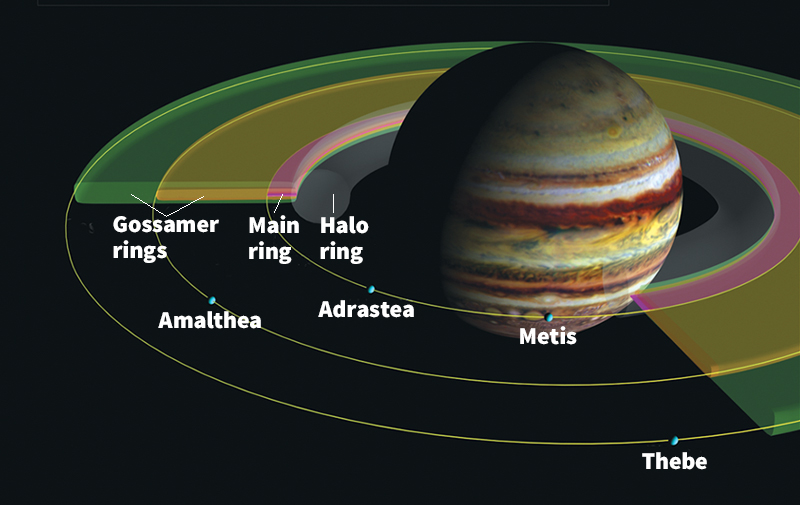
Planetary rings consist of rocky or icy particles. The particles can range in size from microscopic grains to boulders the size of houses. They all circle the planet in individual orbits.
Particles floating in space attract one another through their gravitational pull. This attraction can cause the particles to collide and stick together. Tidal forces, on the other hand, hold back the particles from combining. Tidal forces are stresses resulting from the uneven pull of gravity near a massive object, in this case, the planet. Within a certain distance of a planet, tidal forces prevent particles from sticking together through their gravity alone. Astronomers call this distance the planet’s Roche limit. It is named for Édouard Roche, the French astronomer who first calculated this distance in 1848. Most planetary rings occur inside their planet’s Roche limit.

Planetary rings feature a variety of structures. Many rings consist of narrower bands of varying brightness. Such bands are sometimes called ringlets. Dark areas divide some rings. They are called gaps or divisions. Small satellites orbiting within rings sweep some gaps free of particles. Other satellites, called shepherd moons, “herd” or confine ring particles into narrow bands. Astronomers often refer to all of a planet’s rings and the small moons inside them as the planet’s ring system.
Astronomers do not know for certain when and how the various planetary rings originated. Evidence indicates that most of the rings formed fairly recently, perhaps within the last 100 million years. Diffuse rings appear to be made up of small particles continually cast off from satellites embedded within them. Dense rings may consist of fragments of a large body that was destroyed inside the planet’s Roche limit. Such a body might have been a moon that was shattered by a comet impact. Or, it might have been a Kuiper belt object (KBO) that drifted too close to the planet and was ripped apart by tidal forces. KBO’s are icy bodies commonly found beyond the orbit of Neptune in a region called the Kuiper belt.
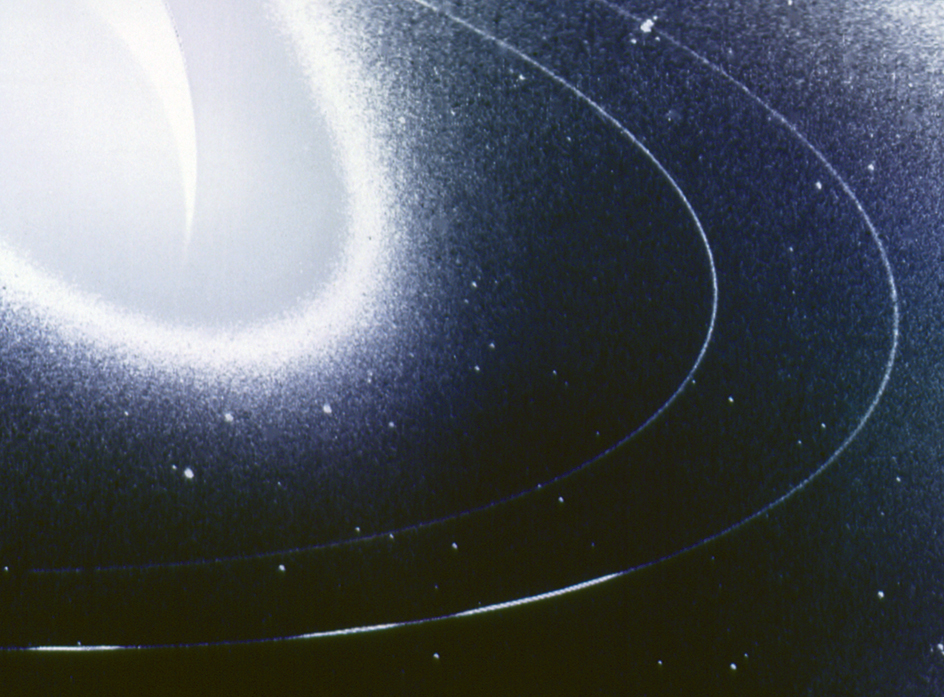
Jupiter’s diffuse rings consist of rock and dust particles. These extremely faint rings lie around the orbits of Jupiter’s inner satellites—Metis, Adrastea, Amalthea, and Thebe. The rings and four moons share a similar composition. Astronomers strongly suspect that the ring particles were blasted from these moons through bombardment by tiny particles known as micrometeoroids.
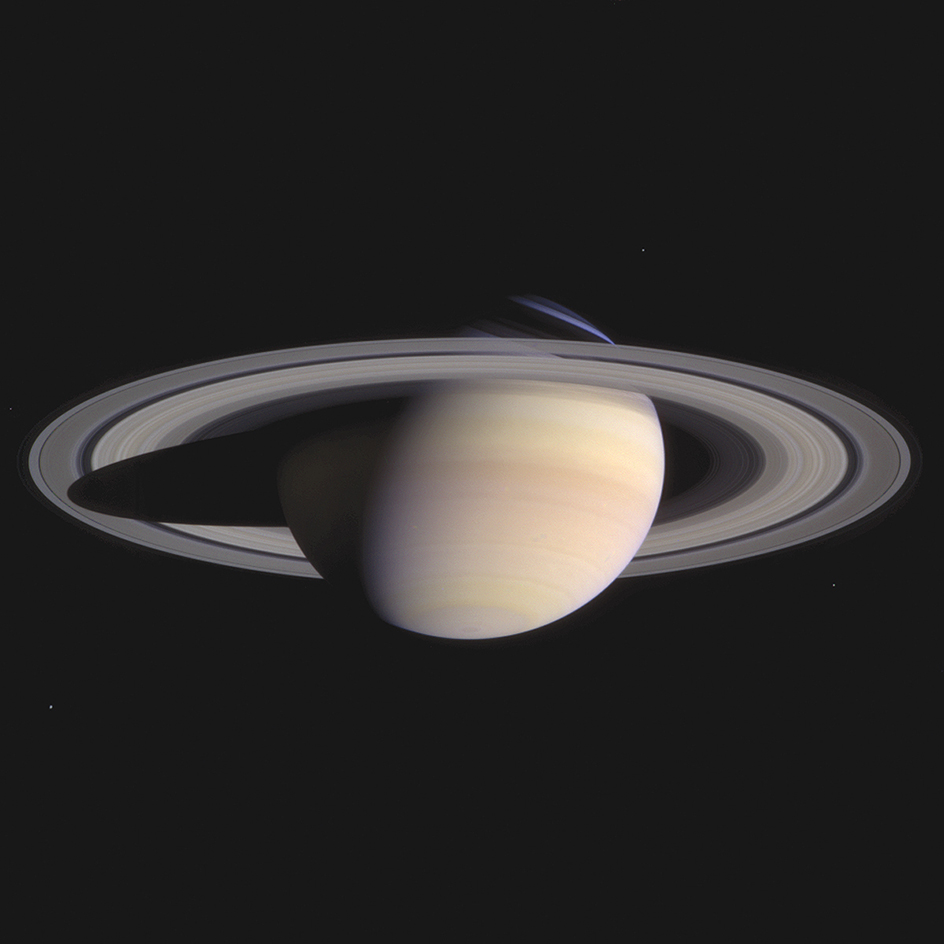
Saturn’s rings rank among the most dazzling and mysterious spectacles in the solar system. The ring particles consist primarily of water ice. They range from dust-sized grains to chunks more than 10 feet (3 meters) in diameter. The total mass (amount of matter) of Saturn’s ring system far exceeds that of the other planets’ ring systems combined. 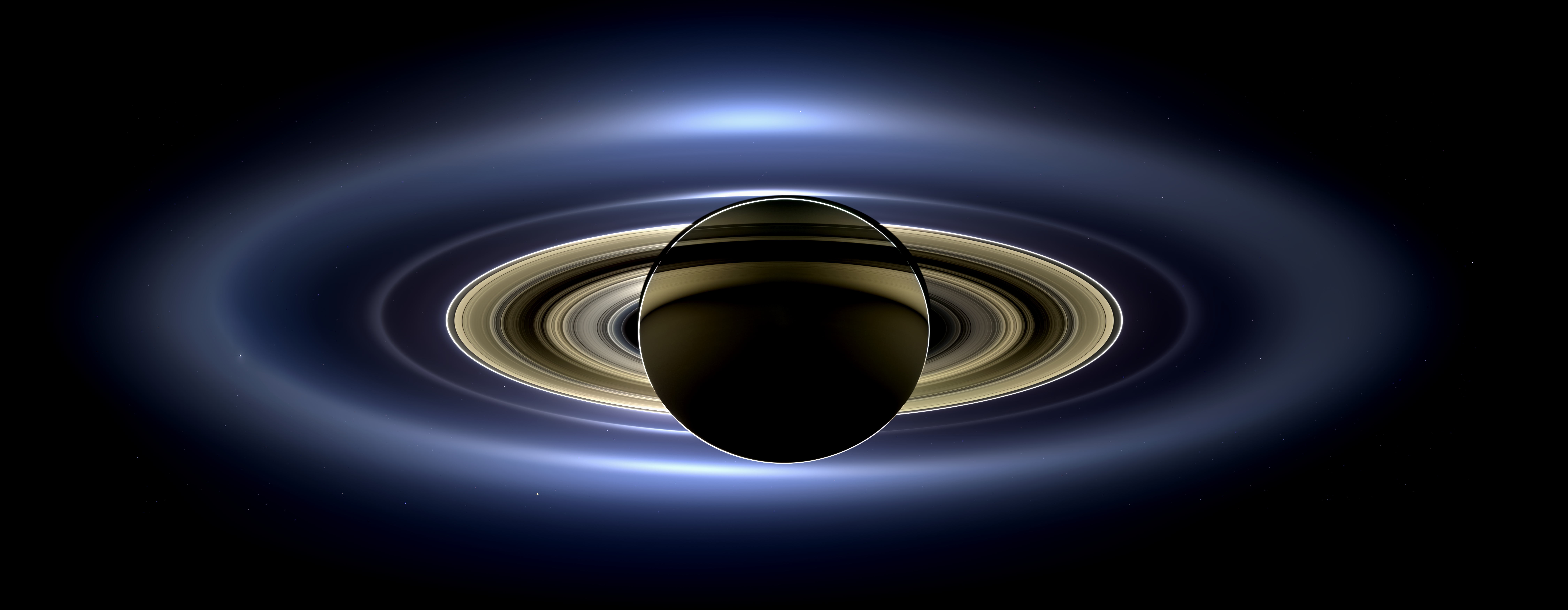
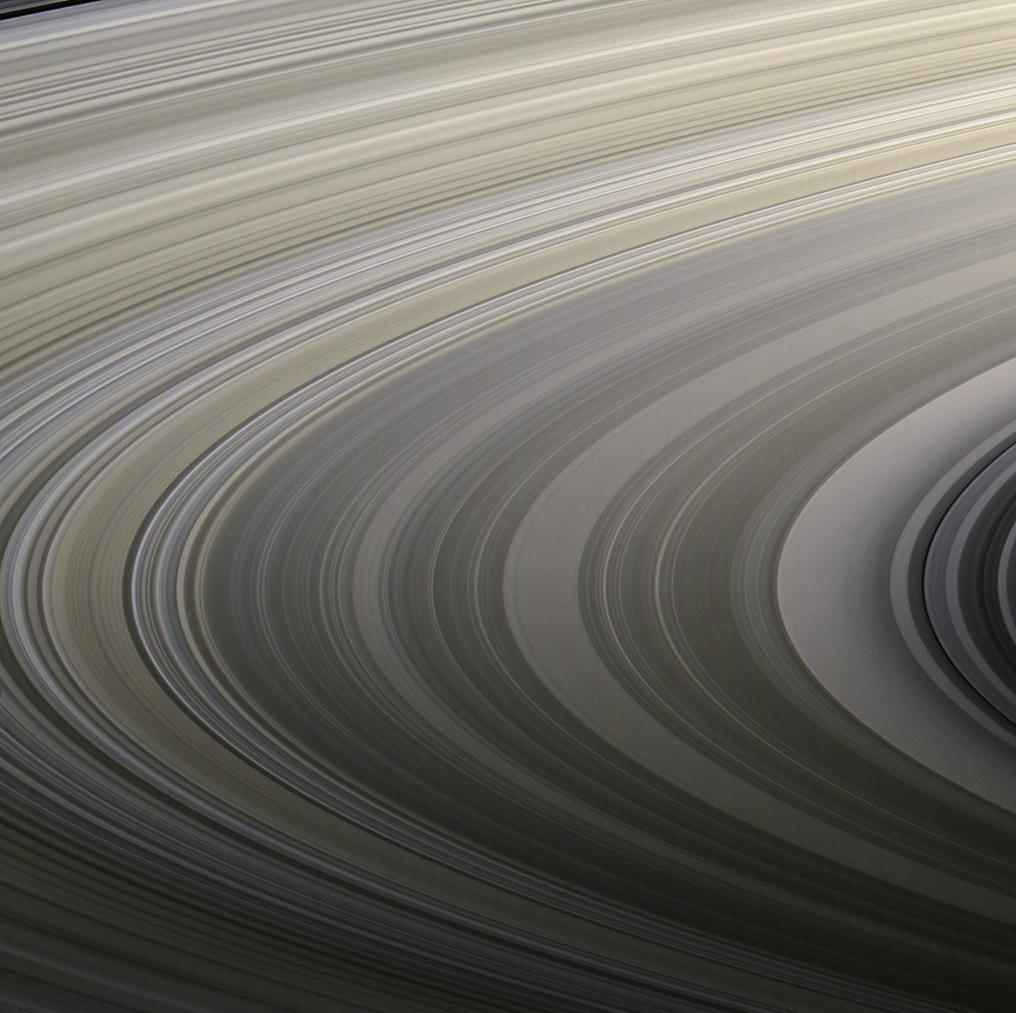
Saturn’s ring system also shows the widest variety of structures. Features of Saturn’s rings include broad, bright bands called plateaus; gaps with wavy edges; tightly wound spiral waves; and “spokes” of varying brightness. Astronomers believe the system’s intricate structure results from complex relations among the ring particles, the planet, and satellites inside and outside the rings. However, they cannot yet explain all of the rings’ features. Observations by the Cassini spacecraft, which arrived at Saturn in 2004, have helped astronomers answer important questions about the rings’ structure, development, and origin. In 2006, scientists studying Cassini images found small propeller-shaped gaps in Saturn’s rings. The gaps are apparently created by particles between roughly 130 feet (40 meters) and 390 feet (120 meters) in diameter. These “moonlets” are probably too large to have accumulated from smaller particles. Their presence thus supports the theory that the rings formed from a moon-sized body that broke apart.
The ring systems of Uranus and Neptune include thin rings and broader regions of dust-sized icy particles. The exact composition of the rings is unknown. But the ring particles are probably coated in a mixture of methane ice and dark, organic (carbon-containing) material. Uranus’s ring system includes 10 narrow rings with sharp edges, 1 diffuse ring, and 2 faint, dusty rings. Many of these rings are not perfectly round. Some of them tilt at a slight angle to the planet’s equator. Four dim rings encircle Neptune. The outermost ring is called the Adams ring for the British astronomer John C. Adams. It is unlike any other ring known. It includes three curved segments called ring arcs that are denser and brighter than the rest of the ring.
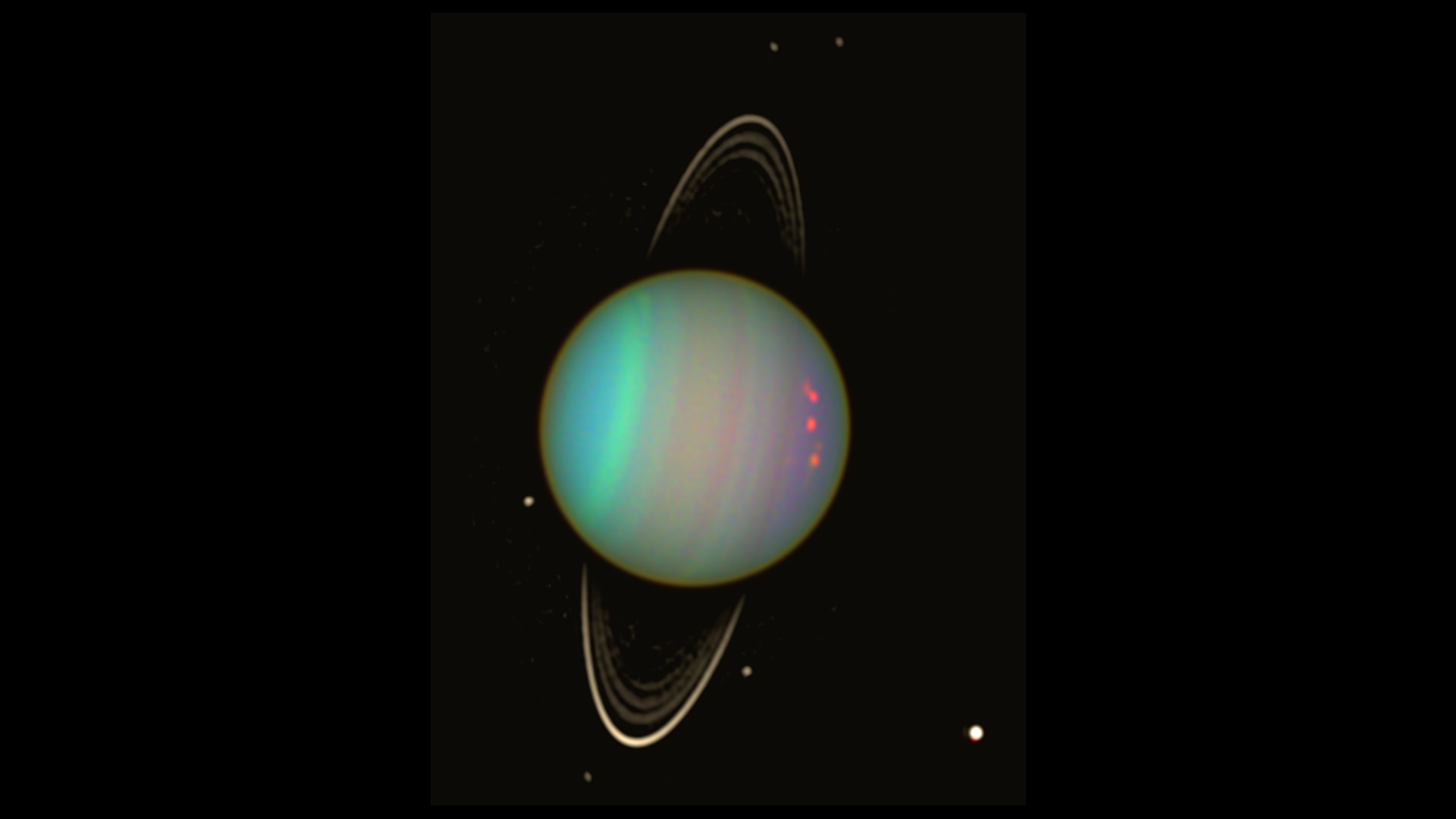
See also Jupiter (Rings) ; Neptune (Satellites and rings) ; Saturn (Rings) ; Uranus (Rings) .
